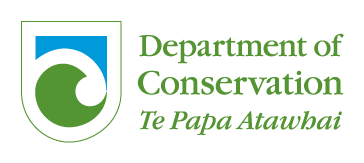Tourism Satelite Account
29 February 2024
StatsNZ
The Tourism Satellite Account, produced by StatsNZ, provides a picture of the role tourism plays in New Zealand, with information on the changing levels and impact of tourism activity. The latest report (year-ended March 2022) and table data can be found on StatsNZ's website.
Key provisional estimates for the year ended March 2022
Note: The 2022 annual estimates captured the impact of COVID-19 in New Zealand between the period April 2021 and March 2022. The impact of the border reopening to international visitors from April 2022 will be evident in Tourism satellite account: Year ended March 2023, to be published in December 2023.
| Year-ended March | Expenditure | Employment in tourism | Contribution to GDP | ||||||
|---|---|---|---|---|---|---|---|---|---|
| Domestic | International | Total | Direct | Indirect | Total | Direct | Indirect | Total | |
| 2020 | $23,834m | $17,687m | $41,521m | 220,863 | 148,392 | 369,255 | 5.4% | 3.7% | 9.1% |
| 2021 | $25,027m | $1,486m | $26,513m | 145,185 | 95,112 | 240,297 | 3.4% | 2.2% | 5.6% |
| 2022 | $25,058m | $1,943m | $27,001m | 127,980 | 84,867 | 212,847 | 3.1% | 2.0% | 5.1% |
| 2023 (provisional) | $26,874m | $10,819m | $37,693m | 189,432 | 128,082 | 317,514 | 3.7% | 2.5% | 6.2% |
| 2023 % change on 2020 | 13% | -39% | -9% | -14% | -14% | -14% | -31.5% | -32.4% | -31.9% |
| 2023 % change on 2021 | 7% | 628% | 42% | 31% | 35% | 32% | 8.8% | 13.6% | 10.7% |
| 2023 % change on 2022 | 7% | 457% | 40% | 48% | 51% | 49% | 19.4% | 25.0% | 21.6% |
- total tourism expenditure was $37.7 billion, an increase of 39.6 percent ($10.7 billion) from the previous year
- international tourism expenditure increased 456.9 percent ($8.9 billion) to $10.8 billion:
- international student expenditure (studying less than 12 months) was $2.1 billion, an increase of 1068 percent ($2.0 billion)
- international tourism’s overall contribution to New Zealand’s total exports of goods and services was 11.4 percent, an increase of 9.0 percentage points
- GST generated from international tourists totalled $209 million, an increase of $72 million
- overseas visitor arrivals to New Zealand increased 858.7 percent to 2,199,073
- domestic tourism expenditure increased 7.2 percent ($1.8 billion) to $26.9 billion:
- household tourism expenditure increase 2.8 percent ($576 million)
- business and government increased 26.5 percent ($1,240 million)
- tourism generated a direct contribution to GDP of $13.3 billion, or 3.7 percent of GDP, an increase of 30.9 percent ($3.1 billion)
- the indirect value added of industries supporting tourism generated an additional $8.8 billion, or 2.5 percent of GDP
- the number of people attributed to being directly employed in tourism was 189,432 – an increase of 48.0 percent (61,452 people)
- the number of tourism employees was 164,619 – an increase of 49.7 percent (54,663)
- the number of tourism working proprietors was 24,813 – a decrease of 37.6 percent (6,786)
- as a share of the total number of people employed in New Zealand, direct tourism employment was 6.7 percent.
Interpretation of data
The data sources used in deriving the numbers for the March 2022 and 2023 years at an industry, commodity, and resultant aggregate level will be subject to future updates. These updates reflect COVID-19 related methodological challenges and further assessment and interpretation of the expenditure compositional change as part of the 2023 cycle of annual analysis and updated input datasets. Data presented in this TSA for these years should serve to provide initial guidance but may be subject to larger than usual updates.
Accommodation expenditure in the March 2023 year continued to be impacted by both Managed Isolation and Quarantine (MIQ), and the use of traditional accommodation providers for emergency housing, including in response to the Auckland Anniversary floods and Cyclone Gabrielle. In line with the definition of a tourist, the vast majority of MIQ expenditure would not fully constitute tourism activity, particularly so for returning New Zealand residents, and emergency housing is not considered tourism activity. While this expenditure would be captured on the supply side, an allowance has been made to exclude this from the tourism demand side. This has consequently led to lower accommodation product and industry ratios which flow through to tourism employment derivations. These derived numbers therefore better reflect ‘employees’ engaged in tourism as opposed to those in accommodation industry entities servicing MIQ and emergency housing.
The derivation of tourism employment is reliant on the relationship between tourism expenditure as a proportion of an industry’s output multiplied by that industry’s employment counts. The substantial loss of international tourism expenditure, and some domestic tourism expenditure, together with COVID-19’s wider impact on industries’ output, and the tourism recovery to date has seen these historically relatively consistent industry ratios change significantly. Furthermore, employment counts in industries have also been affected, noting that during COVID-19 this included a number of people being determined as being employed who have been supported by wage subsidy payments.

